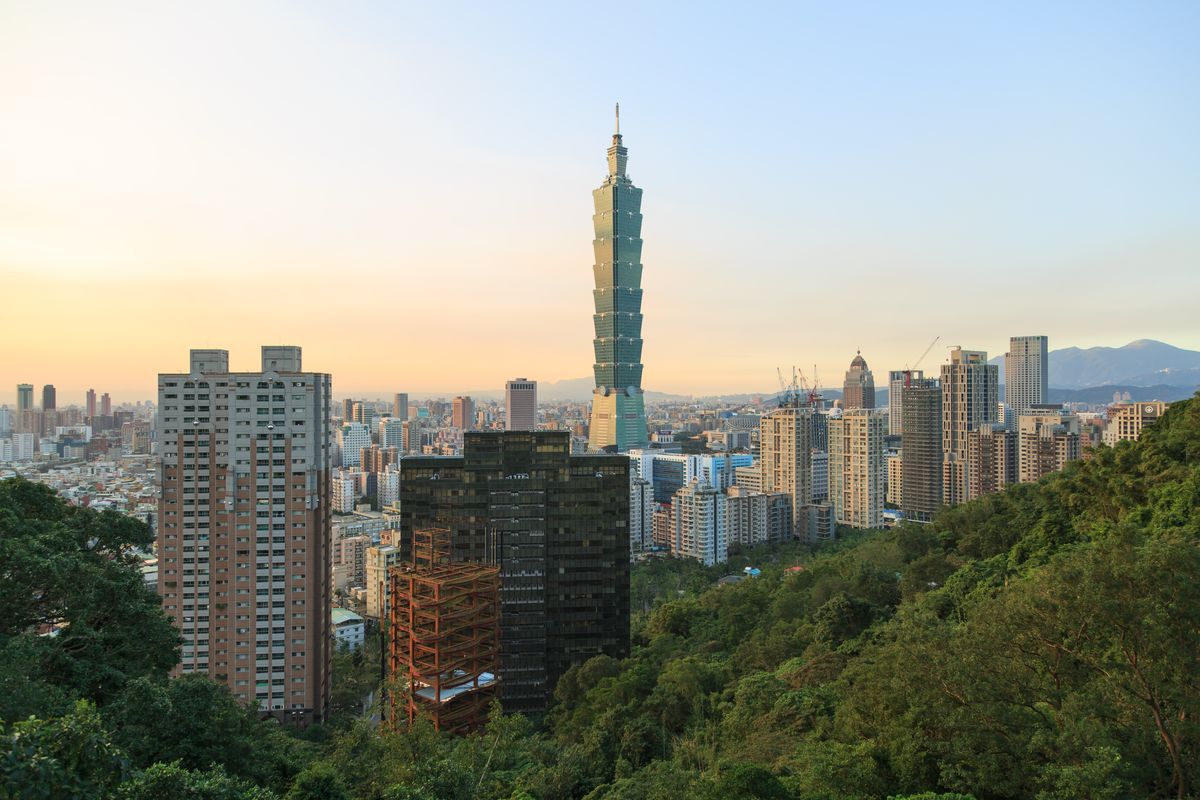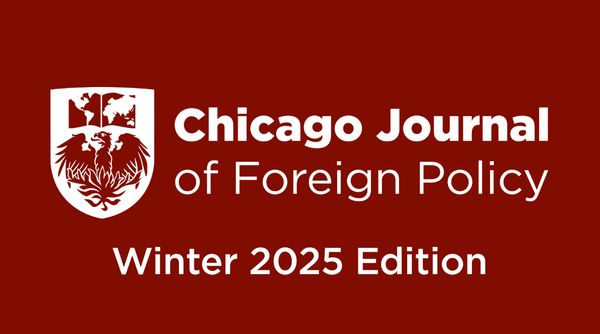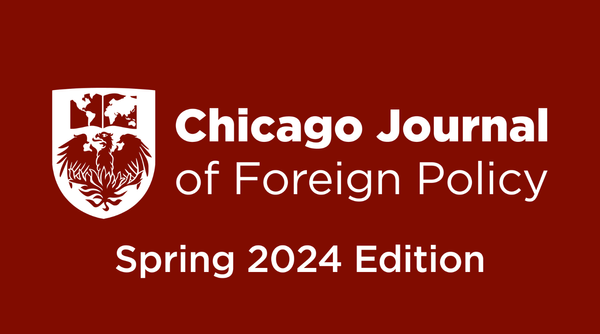Taiwan's Independence Movement & its Effect Across the Taiwan Strait

by PAUL HUANG, University of Toronto ’23
When Chiang Kai-shek arrived on the island of Formosa in December 1949, a Taiwanese future seemed attainable. Before long, nationalists believed that a Taiwanese regime would retake the mainland and reinstate imperial legitimacy. After seven decades, however, Taiwan is no longer on the same trajectory. Instead, it is now engulfed in a movement that replaces imperialism with independence. The end goal of this independence movement is an internationally legitimate country with an ethnic Taiwanese population. Since the end of the Chinese Civil War, prevalent themes developed and bolstered a Taiwanese identity. Simultaneously, China’s transition into the modern world eventually forced it to alter its inital doctrine on reunification. Now, the question remains: Is China sincerely interested in reunification or is the status quo is truly favoured? This article will explore the themes of national identity, long-standing U.S. support, and Taiwanese economic influence on China. It will later examine the gradual shift in Chinese foreign policy toward Taiwan, leading up to the present day. Ultimately, it is evident that China’s commitment to maintaining the geopolitical status quo strengthens the Taiwanese independence movement; illuminating a potential end to this seven-decade struggle.
When Chiang Kai-shek and his Kuomintang-led regime retreated to Formosa in 1949, they sought to take control of education and public opinion.[1] The regime’s goal was to persistently remind the Taiwanese population that the Chinese Communist Party on the mainland was both illegitimate and doomed to fail. In fact, in a 1951 speech, Chiang claimed that “the most important issue in the anti-communist battle rests firmly on education.”[2] What followed was the creation of a curriculum and education system that emphasized the past “greatness and glory of Chinese civilization;”[3] a civilization that was much different from the one that Mao ruled at the time. Chiang’s success through educational indoctrination became the fundamental divide between a Chinese and Taiwanese identity.
This manufactured identity further transmuted towards the end of Chiang’s regime. In 1971 as the United Nations chose to no longer recognize the legitimacy of Taiwan, national frustration began to permeate again.[4] Now, the goal of the Taiwanese population was not a return to the mainland, but rather, international recognition. As soon as the international community started to turn its back on Taiwan, it began “the process of soul searching.”[5] Many Taiwanese questioned their own identity, wondering how the ethnic Han Chinese population of Taiwan became a lesser people to the ethnic Han Chinese of the mainland. Soon enough, grievances over “inequality between the local Taiwanese and the newly arrived mainlanders began to surface.”[6] These frustrations created a sentiment of a further divide between Taiwan and China. What was once different only in the ideological sense, now became different on cultural and ethnic contexts. As a result, Taiwanese ethnic nationalism was born.
Throughout the 1980s and into the 1990s, Taiwan experienced a transition into democratization.[7] Along with it came a new form of Taiwanese civic nationalism. Beginning in 1984, President Chiang Ching-kuo’s selection of Taiwanese-born Lee Teng-hui as his Vice President created the possibility that “native Taiwanese might assume positions of power.”[8] Two years later saw the founding of the pro-independence, pro-Taiwan, Democratic Progressive Party (DPP).[9] Then, by 1996, Taiwan held its first democratic presidential election.[10] With the transition into political liberalization, Taiwan further distinguished itself from China. Unlike its authoritarian, single-party and communist counterpart, Taiwan promoted a value system that aligned with Western ideology and democracy.
With the end of the Second World War giving rise to the international threat of communism, Taiwan emerged as a vital piece in the United States’ Cold War foreign policy of containment.[11] These perpetual demonstrations of solidarity began at the outbreak of the Korean War on June 27th, 1950.[12]As the North Korean army moved across the 38thparallel and forced the South Korean army into retreat, U.S. policymakers became wary of the communist expansion throughout Asia. Their eventual decision was to dispatch the U.S. Seventh Fleet to the Taiwan Strait as a measure to immediately protect the island from China.[13] U.S. President Harry Truman issued a statement saying “I have ordered the Seventh Fleet to prevent any attack on Formosa.”[14] From that moment on, the U.S. would indirectly protect their interests by way of supporting Taiwan.
The fear of rapid communist expansion throughout Asia also led to a 1951 U.S. Aid Mission, providing nearly $1.49 billion in precautionary aid to Taiwan.[15] Taiwan’s highly touted economic miracle would not have been possible without this U.S. aid package.[16] With the U.S. effectively solving Taiwan’s postwar problems of food shortage, inflation, and antiquated military technology, the Taiwanese population received an economic stimulus resulting in industrial growth and robust international trade.[17] Furthermore, the protection of Taiwan expanded into the Mutual Defense Treaty (MDT) of 1954.[18] Signed by the U.S. Congress under the Eisenhower administration, Resolution 159 expressed that the president was “authorized to employ the Armed Forces of the United States as he deems necessary for the specific purpose of securing and protecting Formosa.”[19] Although it is evident that the U.S. had a self-interest in the region, it nonetheless provided military and economic foundation for a new Taiwan.
At the same time that Taiwan was benefiting from U.S. foreign investment, China slowly exited out of the shackles of Mao’s regime. With each new development, the United States began normalizing diplomatic ties with Beijing.[20] First came President Richard Nixon’s inaugural visit to China in 1972.[21] Then, by December of 1978, President Jimmy Carter furthered Taiwanese fears by effectively switching his allegiance to recognize the People’s Republic of China “as the sole legal government of China.”[22] This transition immediately cut off all formal relations with Taiwan. However, as Congress reconvened in early 1979, it quickly passed the Taiwan Relations Act (TRA),[23] citing the need to maintain its presence in the region. Thus, unofficial support from the United States persisted throughout Taiwan’s post-war era. With U.S. society inextricably entrenched in Taiwanese norms, a new aspect of national identity formed.
Although easily overlooked, China’s previous and contemporary reliance on Taiwan undoubtedly propelled them to this current state of development and modernity. In a 1984 speech, Chairman Deng Xiaoping criticized his nation’s previous failures by noting, “the Kuomintang followed the capitalist road for more than 20 years, but China was still a semi-colonial, semi-feudal society, which proved that that road led nowhere.”[24] Hopeful of the ramifications that a market economy would provide, Deng chose to depend heavily upon foreign direct investment.[25] According to Shelley Rigger and Gunter Shubert, “among investors, those originating in Taiwan played an especially important role”[26] in China’s economic expansion. More than any other investor in the early 1990s and 2000s, Taiwanese introduction of contemporary technology and business practices allowed for China’s evolvement into twenty-first-century global capitalism.[27] By mid-2015, statistics from China’s Ministry of Commerce ranked Taiwan fourth among China’s sources of total investment.[28] In response to China’s growing global presence, Taiwanese Minister Lai Shin-yuan argued that a “bargaining chip”[29] with China exists in “the major role Taiwan plays in mainland China’s economy.”[30] Taiwan’s role in the economic surge of the “Chinese Dragon”[31] is an immortalized part of its national identity, contributing to the basis of the independence movement and the implicit indebtedness of the Chinese government.
As for sentiment across the strait, China’s foreign policy towards Taiwan is no longer as rigid and affirmative as it was before. As the United Nations shifted its official recognition from Chiang’s Taiwan to Mao’s China in 1979, communist party leaders demonstrated a severe shift in rhetoric.[32] An agenda that once predicated on liberating Taiwan began to stress a peaceful reunification.[33] By 1984, Deng’s vision became what he called “one country, two systems.”[34] In his proclamation, he notes that as China continues along with its socialist system, Taiwan may continue its capitalist structure. For Deng, “reunification of the motherland is the aspiration of the whole nation.”[35] Even though Taiwan staunchly rejected this proposal, no longer did Chinese rhetoric appear brash and upfront. With China now at the mercy of the U.S. and the international community, Deng feared the possibility of China losing its newly earned support. For China’s sake, Deng had no choice but to relax tensions with Taiwan.
Chinese foreign policy even reached its most concessionary point in August of 1992. At that given moment, both sides of the strait agreed to uphold a One China principle. However, each side expressed their respective verbal interpretation of the agreement.[36] This agreement provided the foundation for the status-quo; a situation in which both sides agreed to disagree on who is the true China. Being pressured into this situation also made it extremely difficult for future Chinese presidents to enact stricter policies towards Taiwan. For China, the progression of international discourse shaped its foreign policy. Even current President Xi Jinping expressed a desire for the “peaceful development of cross-strait ties.”[37] This softening of tensions was not only forced but calculated; a stark contrast to the rhetoric prior to China’s global expansion.
It is because of China’s underlying commitment to the status quo that Taiwan’s contemporary independence movement garners another boost in confidence. For modern supporters, a lack of Chinese leverage plays right into their hands. As the movement progressed through history and into the Post-Cold-War era, it appeared from a distance that Taiwan’s only unmovable obstacle remained China. Nonetheless, by recognizing the limitations of Chinese power over Taiwan, the movement found a foothold. With the election of DPP candidate Tsai Ing-wen in 2016, her rejection of the 1992 consensus loomed large.[38] Quietly supportive of Taiwanese independence, her “DPP regime really prefer to drop all claim to be part of the Chinese mainland.”[39] It was not long after her election that China reduced diplomatic ties with Taiwan under the pretence of her pro-independence leanings. In light of this, China “refrained from threats of violence, and economic integration continued without political interference.”[40] China’s resistance towards Taiwanese antagonization is a limitation of its power. As Lowell Dittmer points out, “Beijing still clings onto a dream.”[41] The dream of reunification experienced even further setbacks with current U.S. President Donald Trump. Early into Tsai’s presidency, Trump called to offer a congratulatory welcome to power.[42] Much to China’s chagrin, Trump furthered relations with Taiwan by authorizing a weapons sale in August 2019.[43] These recent developments with the U.S. served to increase Taiwan’s contemporary leverage and to further garner support for the independence movement. Now that China has limitations of its own, coupled with increased support from the U.S., the Taiwanese independence movement today lacks many of the obstacles it once encountered.
A final reason for the shift in Chinese rhetoric is due to China’s domestic pressures and the impracticality of its desires. Domestically, the prospect of a unified China is “central to the [Chinese Communist Party’s] nationalist credentials.”[44] According to Michael Cole, China created a scenario whereby reunification is inevitable.[45] Chinese presidents propagated an image to their people that Taiwan would stand no chance against forced reunification.[46] However, as much as China openly rejects a notion of independence, the propagation of this doctrine has more to do with party symbolism than a realistic possibility. Dr. Cole argues that China is aware of the myth it created, knowing very well that a forceful attack on Taiwan would be foolish.[47] Despite China presenting harsh rhetoric of the Taiwanese people, it acts in an entirely different manner, and although China will maintain its commitment to a One China policy, it appears as though it will not pursue further action on reunification. There is too much at stake for such a small potential reward. First and foremost, even if Taiwan is to accept the terms of Chinese reunification, would China particularly favour integrating 23 million people who have experienced freedom and democracy?[48] Moreover, the democratic values promoted in Taiwan would most definitely not be acceptable in China. Dr. Cole further argues that these newly integrated Chinese citizens would make it easy to disseminate and promote democratic values.[49] Besides the difference in ideals, Chinese pressure for reunification would also be extremely counterproductive. Currently, China is experiencing a period of immense economic superiority. The ramifications of engaging in a conflict with Taiwan could potentially harm China’s economic rise. Even if China is to actively demand reunification, the result would likely require military intervention. Such an action would not only halt any economic successes, but it would throw China into an undesired international conflict. With the 1979 TRA still in effect, a conflict with Taiwan would consequently guarantee a conflict with the U.S. These challenges leave the Chinese government in a position to decide between stalemate or cataclysmic change. Thus, the prospect of status-quo is still the most desirable. Now with members of the independence movement well aware of China’s inability and unwillingness to break this status quo, the confidence to stage a movement of their own escalates again.
Rapid historical developments have nurtured Taiwan into a global force. During this same time frame, China too experienced a meteoric rise. As their respective histories unfolded, their policies towards one another changed drastically. In Taiwan, what was once Chiang Kai-shek’s dream of a return to the mainland, became a new dream for independence. For China, the adamant desire to regain the lost territory of Taiwan slowly shifted from pragmatic possibility to foolish desire. What now resides is the status-quo of an ambiguous One China policy. Developments of the Civil War, Cold War, and the Post-Cold War era created a range of themes that are integral to Taiwan’s independence movement. In light of Taiwanese nationalism, U.S. support, and Chinese economic dependence on Taiwan, the movement recognizes its legitimacy through leverage. All the while, China’s desire for reunification no longer appears as realistic as it once was. Logistical limitations forced it to become quietly content with the status-quo and empty rhetoric. As history moves forward, it is increasingly likely that Taiwan will continue to poke the “Chinese Dragon.”[50] However, given the leverage Taiwan possesses, further antagonization may not awaken a dragon; instead, it may see capitulation into a “Chinese Panda.”[51]
[1]Bi-yu Chang, Place, Identity and National Imagination: in Postwar Taiwan (Oxon: Routledge, 2015), 155-156.
[2]Chiang Kai-shek, “The Relationship between Education, Revolution, and State-building” (1951), in Place, Identity and National Imagination: in Postwar Taiwan, ed. Bi-yu Chang (Oxon: Routledge, 2015) 155.
[3]Chang, Place, Identity and National Imagination, 156.
[4]Rou-lan Chen, “Chinese Youth Nationalism in a Pressure Cooker,” in Taiwan and China: Fitful Embrace, ed. Lowell Dittmer (Oakland: University of California Press, 2017), 110.
[5]Chang, Place, Identity and National Imagination, 3.
[6]Chang, Place, Identity and National Imagination, 3.
[7]Richard C. Bush, Uncharted Strait: The Future of China-Taiwan Relations (Washington, D.C.: The Brookings Institution Press, 2013), 13-14.
[8]Ibid., 13.
[9]Ibid., 13.
[10]Ibid., 14.
[11]Shih-Shan Henry Tsai, Maritime Taiwan: Historical Encounters with the East and the West(New York: M.E. Sharpe, Inc., 2009), 180.
[12]Ibid., 180.
[13]Ibid., 180.
[14]Harry S. Truman, “Statement on Formosa” (speech, Washington, D.C., January 5, 1950), USC US-China Institute, https://china.usc.edu/harry-s-truman-%E2%80%9Cstatement-formosa%E2%80%9D-january-5-1950.
[15]Tsai, Maritime Taiwan, 182.
[16]Ibid., 182.
[17]Tsai, Maritime Taiwan, 182.
[18]Ibid., 188.
[19]U.S. Congress, Joint, Authorizing the President to employ the Armed Forces of the United States
for protecting the security of Formosa, the Pescadores and related positions and territories of that area, H.J.R. 159, 84thCong., 1stsess., introduced in the House January 29, 1959. https://www.govtrack.us/congress/bills/84/hjres159/text.
[20]Tsai, Maritime Taiwan, 194.
[21]Bush, Uncharted Strait, 10.
[22]Jimmy Carter, “Establishing Diplomatic Relations with China” (speech, Washington, D.C., December 15, 1978), University of Virginia Miller Center, https://millercenter.org/the-presidency/presidential-speeches/december-15-1978-speech-establishing-diplomatic-relations.
[23]Ibid., 195.
[24]Deng Xiaoping, “Build Socialism with Chinese Characteristics” (speech, Beijing, June 30, 1984), Wellesley College, http://academics.wellesley.edu/Polisci/wj/China/Deng/Building.htm.
[25]Shelley Rigger and Gunter Schubert, “Taiwan’s Contribution to China’s Economic Rise and Its Implications for Cross-Strait Integration,” in Taiwan’s Impact on China: Why Soft Power Matters More than Economic or Political Input, ed. Steve Tsang (Cham: Springer International Publishing, 2017), 96.
[26]Ibid., 96.
[27]Rigger and Schubert, “Taiwan’s Contribution to China’s Economic Rise and Its Implications for Cross-Strait Integration,” 96.
[28]Ibid., 99.
[29]Lai Shin-yuan, “American Enterprise Institute Speech” (speech, Washington, D.C., August 5,
2010), Mainland Affairs Council, https://www.mac.gov.tw/en/News_Content.aspx?n=A921DFB2651FF92F&sms=37838322A6DA5E79&s=9AEBFABB5E791466.
[30]Ibid.
[31]Gunter Schubert, “Conclusions: Assessing the China Impact,” in Taiwan and the ‘China Impact’: Challenges and opportunities, ed. Gunter Schubert (Oxon: Routledge, 2016), 305.
[32]Ibid., 79.
[33]Ibid., 79.
[34]Ibid., 79.
[35]Deng Xiaoping, “One Country, Two Systems” (speech, Xinhua, June 22, 1984), China Daily, http://www.chinadaily.com.cn/english/doc/2004-02/19/content_307590.htm.
[36]Chen, US-China Rivalry and Taiwan’s Mainland Policy, 80-81.
[37]Chen, US-China Rivalry and Taiwan’s Mainland Policy, 92.
[38]Ibid., 198.
[39]Lowell Dittmer, “Introduction,” in Taiwan and China: Fitful Embrace, ed. Lowell Dittmer (Oakland: University of California Press, 2017), 1.
[40]Lowell Dittmer, “Taiwan and the Waning Dream of Reunification,” in Taiwan and China: Fitful Embrace, ed. Lowell Dittmer (Oakland: University of California Press, 2017), 291.
[41]Ibid., 297.
[42]Dean P. Chen, “The Trump Administration’s One‐China Policy: Tilting toward Taiwan in an Era of U.S.‐PRC
Rivalry?” Asian Politics & Policy11, no. 2 (April 2019): 253,
https://onlinelibrary-wiley com.myaccess.library.utoronto.ca/doi/full/10.1111/aspp.12455.
[43]Ryan Browne and Kevin Liptak, “Trump admin gives green light for major arms sale to Taiwan.” Accessed March 10, 2020, https://www.cnn.com/2019/08/16/politics/arms-sale-taiwan/index.html.
[44]Michael J. Cole, Convergence or Conflict in the Taiwan Strait: The illusion of peace?(London: Routledge, 2016), 150.
[45]Ibid., 150.
[46]Ibid., 157.
[47]Ibid., 157-158.
[48]Ibid., 154.
[49]Cole, Convergence or Conflict in the Taiwan Strait, 154.
[50]Arne Kislenko, conversation with Paul Huang, Office Hours, University of Toronto, March 10, 2020.
[51]Ibid.





